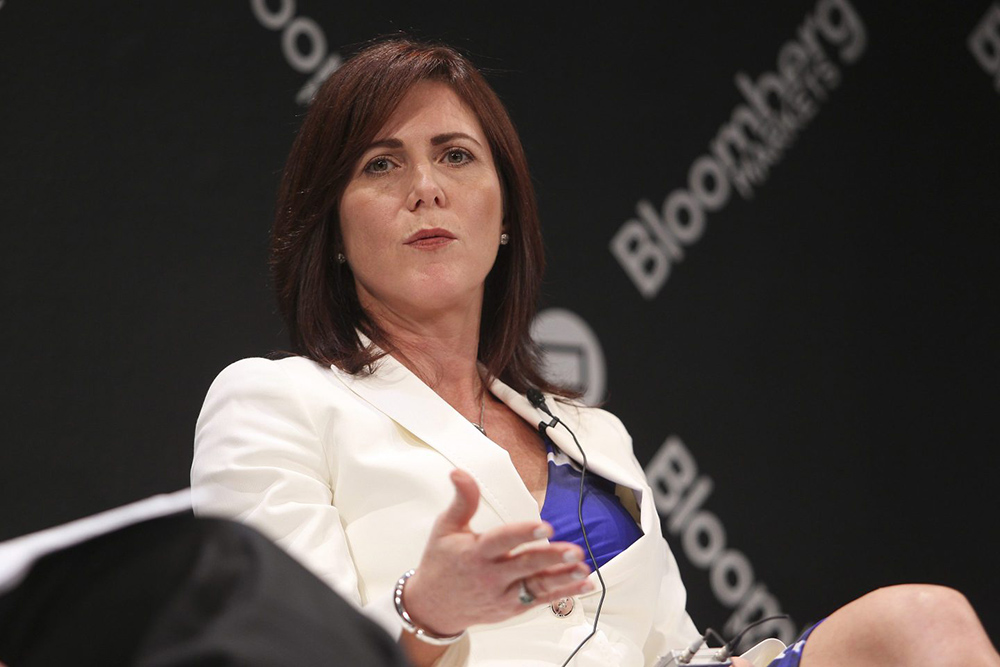
艾維·澤爾曼早在預言2008年房地產市場崩潰之前,就已經被稱為“毒藤女”。她在中學時不喜歡這個綽號,但時過境遷,作為沃克鄧祿普公司(Walker & Dunlop)旗下的Zelman & Associates公司的執行副總裁,現在她認為這個綽號是榮譽勛章。在次貸危機爆發前幾年,她曾擔任瑞士信貸(Credit Suisse)的分析師,從事房屋建筑商分析。她解釋稱,房價過高,人們難以負擔,貸款市場變得瘋狂,建筑商正在購買土地和盲目擴張。澤爾曼說道:“買房可以零首付,還有以虛假方式獲得貸款的情況。”
澤爾曼回憶道:“人們以前開玩笑說:‘某一天,她的預言會成真。’”2005年夏,她的團隊發布了一份名為《瘋狂的投資者》(Investors Gone Wild)的報告。當年下半年,市場開始惡化,澤爾曼更加堅定了自己的立場。2006年,在由超大型住宅建筑商Toll Brothers時任首席執行官鮑勃·托爾主持的營收電話會議上,托爾表示情況正在好轉,或許房地產市場已經觸底。澤爾曼的回應廣為人知。她表示:“你是喝了什么酷愛(Kool-Aid)飲料了嗎?我也想來點兒。”
然而,當年股市反彈,而房地產市場被認為正在復蘇。但她依舊沒有改變立場;澤爾曼仍然持悲觀態度。她說道:“那段時間很艱難。我有許多不愉快的夜晚。”但在那次電話會議幾個月后,她的預測得到了驗證。當時美國抵押貸款機構新世紀(New Century)申請破產。該公司在2006年曾發放了516億美元次級貸款。澤爾曼表示:“這是末日的開始。”房地產市場崩潰,這也成為引發全球金融危機的導火索。
新的困境
不到二十年后,美國房地產市場面臨新的困境。澤爾曼認為,房地產市場最嚴重的問題是可負擔性不足。史上最低的抵押貸款利率和新冠疫情帶來了房地產市場繁榮;房價暴漲,而且隨著美聯儲為控制頑固的通脹選擇加息,最終抵押貸款利率也隨之大幅上漲。澤爾曼表示,情況或許略有好轉,但許多人買不起房,他們在二十五甚至接近三十歲之前,只能住在父母家中,而且“這導致人們推遲了組建家庭的時間”。
這與金融危機前幾年或整個金融危機期間的情況都截然不同,因為目前全美房價并未下滑,而是在上漲。但房屋銷量,確切地說是現房銷量,卻大幅下降。她提到去年的情況時說道:“你從未見過房價大幅上漲的同時成交量下跌的情況。”去年,現房銷量降至近三十年來的最低點。人們不想失去之前鎖定的低抵押貸款利率,因此暫停賣房,而且房屋庫存量不足,即使他們選擇賣房,還要面臨去哪里買新房的問題。雖然隨著成交量增加,現房銷售有所改善,但澤爾曼預測現房銷售無法恢復到通常水平,因為人口結構方面也有一些不利因素。澤爾曼解釋說,隨著人口老齡化,當X世代和嬰兒潮一代老去,他們的搬家次數會越來越少。
房地產市場似乎陷入了停滯,而現房市場尤其如此。但我們看到人們有時候確實不得不搬家。幸運的是,由于這種流動,房屋庫存增加。在一些有大量庫存的大都市區,房價正在下降或趨于平穩。而且現房庫存增加不僅僅是因為推遲搬家的人們終于決定搬家,另外一個原因是新房增多。最近,新房銷售出人意料地表現良好,部分原因是建筑商開始建設較小的住宅,或者提供激勵以刺激需求:其中一個重要的激勵措施是抵押貸款利率買斷。澤爾曼表示:“房屋可負擔性依舊非常緊張,因此目前房地產市場處于一種艱難的狀態。”美國房地產市場在一段時間內可能要陷入這種狀態。
而且澤爾曼表示,盡管人們紛紛猜測,但美聯儲降息并不意味著抵押貸款利率下降,這呼應了她的同事本月早些時候發表的類似觀點。抵押貸款利率與10年期美國國債的收益率息息相關,兩者之家的差異被稱為“利差”,目前利差遠高于歷史平均水平,這代表美國的經濟環境極其復雜。美國的債券市場已經反映出對美聯儲降息的預期,這是抵押貸款市場可能面臨風險的另外一個信號,也引發了對信貸質量的擔憂。澤爾曼認為,未來一兩年,抵押貸款利率只會能下降0.50%。她表示:“抵押貸款利率仍將維持在6%左右,這意味著可負擔性依舊緊張。”
好消息?
最近幾個月,房價上漲速度放緩,并且表現出進一步放緩的跡象。澤爾曼表示:“我們預測房價上漲會持續減速,而且在今年下半年會更加明顯,房價漲幅會降至低個位數。這是因為,我們認為房屋庫存將繼續給房價帶來下行壓力。”然而,由于新房建設地點存在差異,有些城市的房價可能并未放慢上漲的速度。(財富中文網)
譯者:劉進龍
審校:汪皓
艾維·澤爾曼早在預言2008年房地產市場崩潰之前,就已經被稱為“毒藤女”。她在中學時不喜歡這個綽號,但時過境遷,作為沃克鄧祿普公司(Walker & Dunlop)旗下的Zelman & Associates公司的執行副總裁,現在她認為這個綽號是榮譽勛章。在次貸危機爆發前幾年,她曾擔任瑞士信貸(Credit Suisse)的分析師,從事房屋建筑商分析。她解釋稱,房價過高,人們難以負擔,貸款市場變得瘋狂,建筑商正在購買土地和盲目擴張。澤爾曼說道:“買房可以零首付,還有以虛假方式獲得貸款的情況。”
澤爾曼回憶道:“人們以前開玩笑說:‘某一天,她的預言會成真。’”2005年夏,她的團隊發布了一份名為《瘋狂的投資者》(Investors Gone Wild)的報告。當年下半年,市場開始惡化,澤爾曼更加堅定了自己的立場。2006年,在由超大型住宅建筑商Toll Brothers時任首席執行官鮑勃·托爾主持的營收電話會議上,托爾表示情況正在好轉,或許房地產市場已經觸底。澤爾曼的回應廣為人知。她表示:“你是喝了什么酷愛(Kool-Aid)飲料了嗎?我也想來點兒。”
然而,當年股市反彈,而房地產市場被認為正在復蘇。但她依舊沒有改變立場;澤爾曼仍然持悲觀態度。她說道:“那段時間很艱難。我有許多不愉快的夜晚。”但在那次電話會議幾個月后,她的預測得到了驗證。當時美國抵押貸款機構新世紀(New Century)申請破產。該公司在2006年曾發放了516億美元次級貸款。澤爾曼表示:“這是末日的開始。”房地產市場崩潰,這也成為引發全球金融危機的導火索。
新的困境
不到二十年后,美國房地產市場面臨新的困境。澤爾曼認為,房地產市場最嚴重的問題是可負擔性不足。史上最低的抵押貸款利率和新冠疫情帶來了房地產市場繁榮;房價暴漲,而且隨著美聯儲為控制頑固的通脹選擇加息,最終抵押貸款利率也隨之大幅上漲。澤爾曼表示,情況或許略有好轉,但許多人買不起房,他們在二十五甚至接近三十歲之前,只能住在父母家中,而且“這導致人們推遲了組建家庭的時間”。
這與金融危機前幾年或整個金融危機期間的情況都截然不同,因為目前全美房價并未下滑,而是在上漲。但房屋銷量,確切地說是現房銷量,卻大幅下降。她提到去年的情況時說道:“你從未見過房價大幅上漲的同時成交量下跌的情況。”去年,現房銷量降至近三十年來的最低點。人們不想失去之前鎖定的低抵押貸款利率,因此暫停賣房,而且房屋庫存量不足,即使他們選擇賣房,還要面臨去哪里買新房的問題。雖然隨著成交量增加,現房銷售有所改善,但澤爾曼預測現房銷售無法恢復到通常水平,因為人口結構方面也有一些不利因素。澤爾曼解釋說,隨著人口老齡化,當X世代和嬰兒潮一代老去,他們的搬家次數會越來越少。
房地產市場似乎陷入了停滯,而現房市場尤其如此。但我們看到人們有時候確實不得不搬家。幸運的是,由于這種流動,房屋庫存增加。在一些有大量庫存的大都市區,房價正在下降或趨于平穩。而且現房庫存增加不僅僅是因為推遲搬家的人們終于決定搬家,另外一個原因是新房增多。最近,新房銷售出人意料地表現良好,部分原因是建筑商開始建設較小的住宅,或者提供激勵以刺激需求:其中一個重要的激勵措施是抵押貸款利率買斷。澤爾曼表示:“房屋可負擔性依舊非常緊張,因此目前房地產市場處于一種艱難的狀態。”美國房地產市場在一段時間內可能要陷入這種狀態。
而且澤爾曼表示,盡管人們紛紛猜測,但美聯儲降息并不意味著抵押貸款利率下降,這呼應了她的同事本月早些時候發表的類似觀點。抵押貸款利率與10年期美國國債的收益率息息相關,兩者之家的差異被稱為“利差”,目前利差遠高于歷史平均水平,這代表美國的經濟環境極其復雜。美國的債券市場已經反映出對美聯儲降息的預期,這是抵押貸款市場可能面臨風險的另外一個信號,也引發了對信貸質量的擔憂。澤爾曼認為,未來一兩年,抵押貸款利率只會能下降0.50%。她表示:“抵押貸款利率仍將維持在6%左右,這意味著可負擔性依舊緊張。”
好消息?
最近幾個月,房價上漲速度放緩,并且表現出進一步放緩的跡象。澤爾曼表示:“我們預測房價上漲會持續減速,而且在今年下半年會更加明顯,房價漲幅會降至低個位數。這是因為,我們認為房屋庫存將繼續給房價帶來下行壓力。”然而,由于新房建設地點存在差異,有些城市的房價可能并未放慢上漲的速度。(財富中文網)
譯者:劉進龍
審校:汪皓
Ivy Zelman was “Poison Ivy” long before she called the 2008 housing crash. She didn’t like the nickname much in middle school, but things have changed, and the executive vice president of Walker & Dunlop company Zelman & Associates now considers it a badge of honor. She was an analyst at Credit Suisse who followed homebuilders in the years before the subprime mortgage crisis. Housing was unaffordable, lending was bonkers, and builders were buying land and scaling frivolously, she explained. “There was no money down and liar loans,” Zelman said.
“People used to joke, ‘Oh, someday she’ll be right,’” Zelman recalled, and in the summer of 2005, her team released a report called “Investors Gone Wild.” In the second half of the year, the market started to turn for the worse, and she doubled down. During a 2006 earnings call with Bob Toll, then–chief executive of McMansion builder Toll Brothers, Toll said things were getting better, and maybe the housing market had bottomed. Zelman famously responded: “Which Kool-Aid are you drinking, because I want some.”
Yet stocks rallied that year, and the housing market was thought to be recovering. Still, she wasn’t convinced; Zelman kept her bearish tune. “That was hard,” she said. “There were many nights where I could tell you that it wasn’t fun.” But she was vindicated months after that call, when mortgage lender New Century, which issued $51.6 billion in subprime loans in 2006, filed for Chapter 11 bankruptcy. “That was the beginning of the end,” Zelman said. The housing market crashed, and it was a catalyst for the Great Financial Crisis.
A new predicament
Less than two decades later, and the housing world is in another predicament. Its most dire problem, as Zelman sees it, is a lack of affordability. Lower than ever mortgage rates and a pandemic fueled a housing boom; home prices skyrocketed, and eventually, mortgage rates did, too, once the Federal Reserve raised interest rates to tame scorching inflation. Things may be slightly better, but a lot of people can’t buy homes, so they are living with their parents until their mid- to late twenties, Zelman said, and “it’s delaying household formations.”
It isn’t the same as what happened in the years leading up to the financial crisis, or throughout it, because home prices haven’t fallen, not on a national scale; they actually rose. But sales, or rather existing-home sales, have plummeted. “You’ve never seen recessionary volume with home price inflation as robust as that was,” she said, referring to last year, when existing-home sales fell to their lowest point in almost three decades. People weren’t selling their homes, because they didn’t want to lose the low mortgage rate they’d locked in prior, and there was so little inventory that even if they chose to sell, there was a question of where they’d go. And while she sees existing-home sales improving as turnover increases, she doesn’t expect it to go back to typical levels, because there’s a demographic headwind, too. People are aging, and when Gen Xers and baby boomers age, they move less, Zelman explained.
Everything feels frozen in place, and in the existing-home camp, it kind of is. But people have to move sometime, and we’re already seeing it in real time. Luckily, because of that, inventory is increasing. So in some metropolitan areas where there’s substantial inventory, home prices are declining or are otherwise flat. And it isn’t simply an increase in existing stock as those who delayed moves finally do so, but the presence of new homes. New-home sales, until recently, have done surprisingly well, and part of that is because builders can construct smaller homes or offer incentives to springboard demand: Mortgage rate buydowns are a big one. Still, “affordability is pretty stretched, so the housing market’s kind of in a grind mode,” Zelman said, and we might be stuck in it for a bit.
And a Fed cut doesn’t necessarily mean mortgage rates will fall, despite what people tend to suspect, Zelman said, echoing her colleague who said something similar earlier in the month. Mortgage rates are correlated to the 10-year Treasury yield, but the difference between the two is called the “spread,” and the spread is much higher than historical norms, an indicator of a particularly complex economic environment. The bond market is already anticipating, and pricing in, a rate cut from the Fed, another sign of perceived risk in the mortgage market as well as concerns about credit quality. In the next one to two years, Zelman only sees mortgage rates declining 0.50%. “Mortgage rates will still have a six handle on them, and that means that we still have affordability that’s pretty stretched,” she said.
The upside?
In recent months, home-price inflation has slowed, and showed signs of slowing further. “We do expect deceleration to continue and see more pronounced slowing in the back half of the year into the low single digits, and I think that’s really because we view the inventory scenario as likely to continue to put downward pressure on home price,” Zelman said. However, because of the variation in where new-home construction occurs, there could be metros where home prices don’t ease at all.






